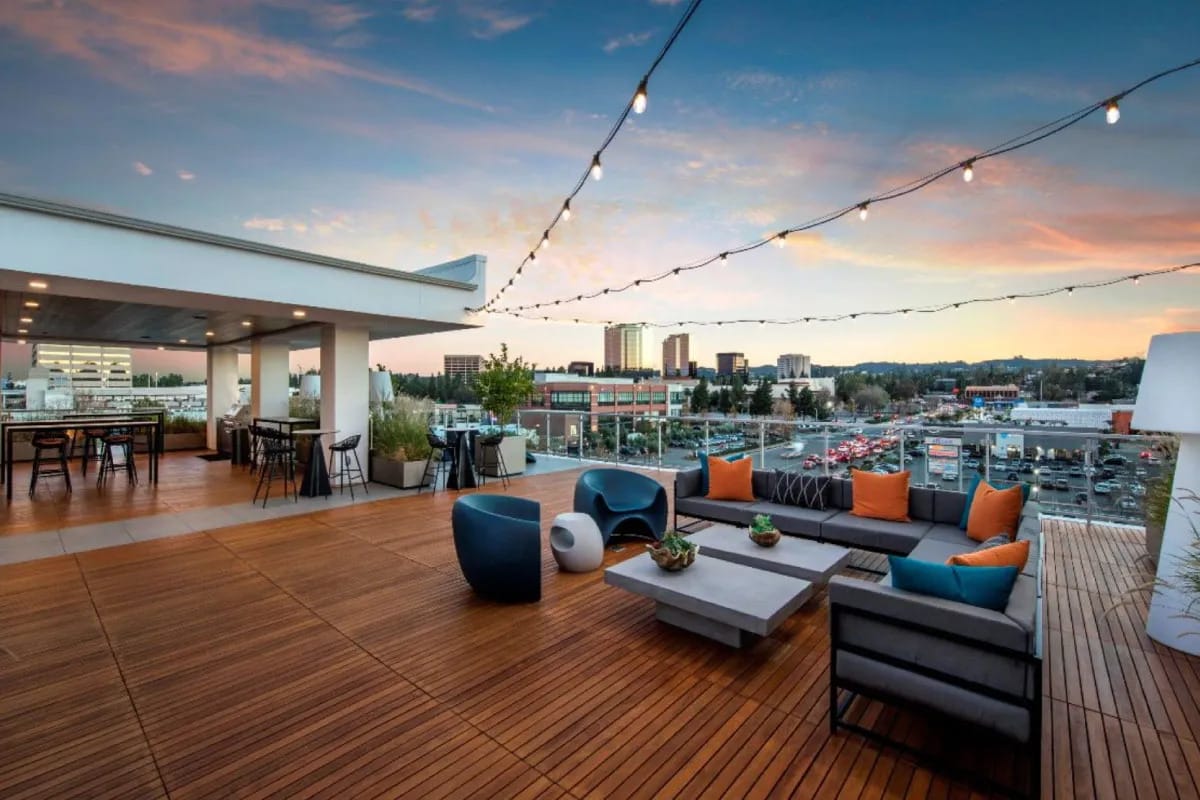How High Rates and Low Supply Are Shaping the Retail CRE Market
Plus: The office sector is witnessing a paradigm shift, with heightened vacancy rates across metropolitan areas.
Together with
Good morning. Despite e-commerce challenges amidst the pandemic, the retail sector is thriving. Plus, urban spaces are witnessing a shift as high vacancies turn traditional offices into flexible, mixed-use buildings that cater to the changing preferences of today's workers.
Today’s issue is sponsored by Paramount Property Tax Appeal—take the first step towards lower property tax payments.
👋 First time reading? Sign up.
🎁 Want free merch? Share this.
Market Snapshot
|
|
||||
|
|
*Data as of 11/12/2023 market close.
SPACE CRUNCH
Supply Drought and Soaring Rates Propel Retail to
Despite e-commerce challenges amidst the pandemic, the retail sector is thriving with six months of continuous sales growth. However, rent growth is slowing down. JLL's U.S. Retail Outlook Q3 2023 report emphasizes that the main challenge is limited prime space, not a lack of demand.
What’s hampering the growth? The shortage in retail real estate is mainly due to a scarcity of new constructions and the demolition of 145 million square feet in the past half-decade. Availability rates are 200 basis points below the long-term average, with a particular deficit of medium-sized units and additional parcels in prime Sun Belt locations.
Between the lines: Despite this, the percentage of leased space is still higher than average, at 8% of total space. Construction has dropped by 30.4% from the previous quarter, contributing to a steady vacancy rate of 4.2%. Rent is increasing across all major markets, with the Sun Belt experiencing the highest growth, though the overall pace of rent hikes is decelerating.
Demand is shifting to freestanding retail spaces: Retail space is shifting to standalone stores with a 10.2% dip in space occupation from last quarter to 10.4 million square feet. Independent retail spaces are on the rise, with less space taken up by larger malls. Quick Service Restaurants, discounters, and food and beverage shops are leading in leasing activity. Fitness and experiential stores like Planet Fitness and Urban Air are also claiming more large retail spaces.

M&A activity: Recent major transactions in the retail space, such as Kimco Realty's acquisition of RPT Realty and the merger of Realty Income Corporation with Spirit Realty Capital, underscore the sector's attractiveness. The CMBS market reflects this trend, with a notable pivot towards retail investment over office spaces, demonstrating retail's renewed investment appeal.
➥ THE TAKEAWAY
Big picture: Retail real estate has made a remarkable comeback, transitioning from the CRE underdog t to an investor favorite, fueled by limited supply and increasing rents. This resurgence is characterized by a continuous rise in property sales, thanks to a scarcity of space and the removal of outdated malls. The lack of new developments post-Global Financial Crisis has further constricted supply, leading to significant rent growth and a strong performance of retail spaces.
TOGETHER WITH PPTA
Slash Your Property Taxes! Deadline Nov 30th for California
The deadline for property tax appeals in most California counties is November 30th. Paramount Property Tax Appeal specializes in assisting clients with reducing their property tax liabilities.
CASE STUDY: $22.7 Million Reduction for Multifamily Property
-
Their client owned a multifamily property that was assessed at $133M, and inaccuracies in the assessment were identified by the firm.
-
Paramount Property Tax Appeal challenged the Assessor's valuations to ensure they reflect the true market values. The firm demonstrated that rents were overestimated and the land residual undervalued.
-
After the firm presented its findings, the Board agreed with their assessment, reducing the property's assessed value to $110M, which resulted in a $22.7M reduction.
Ready to lower your taxes? Enter your property information for a free consultation.
TRENDING HEADLINES
-
District Development: A coalition of South Austin bar and property owners is investing in transforming the area into a bustling $270 million entertainment district, complete with residential, retail, and nightlife spaces, modeled after the success of Rainey Street.
-
Loan Trigger: The request to terminate a lease at 410 Tenth Avenue has activated a cash management provision in its $565 million CMBS loan, affecting the Manhattan Hudson Yards office property.
-
Urban Equity: Over three decades since New York mandated equitable facility distribution, a City Comptroller report reveals persistent siting of less-wanted amenities like shelters and waste stations in already strained neighborhoods, contrary to the intent for citywide parity.
-
Antitrust Case: A class-action lawsuit accuses the Real Estate Board of New York and 26 brokerage firms of inflating commissions by enforcing rules that compel sellers to pay buyer's broker fees, spotlighting broader legal challenges to National Realtors' policies.
THE NEW COMMUTE
How Mixed-Use Spaces Are Transforming for Flexible Work

Q Work has been strategically designed with bright colors and an inspiring atmosphere to spark the creativity and productivity of remote workers. (Photo credit: Juan Tallo)
Urban spaces are witnessing a shift as high vacancies turn traditional offices into flexible, mixed-use buildings that cater to the changing preferences of today's workers.
Redefining mixed-use developments: The changing needs of the workforce have architects and designers rethinking the function and layout of mixed-use developments. Where once retail shops stood, now innovative co-working spaces emerge, equipped with the latest technology, ergonomic design, and amenities that support both work efficiency and lifestyle quality.
-
These new spaces are responding to a workforce that values the accessibility of workspaces within their living environment, exemplified by projects like The Q Variel in Los Angeles' Warner Center.
Boosting community engagement: Creative office spaces within these mixed-use environments offer more than just a place to work; they serve as catalysts for community and economic development. By situating workspaces in densely populated areas, there's a direct infusion of economic activity as local businesses receive increased patronage from remote workers.
-
This strategy enhances the economic vibrancy of neighborhoods and fosters a sense of community, where residents and workers can enjoy a synergistic mix of amenities that promote social interaction and professional networking.
➥ THE TAKEAWAY
The future of work: The shifting landscape of office and residential spaces signifies more than a trend; it's a cultural pivot towards a future where work-life balance is physically embedded in our architecture. These changes are not just reshaping buildings but are redefining the essence of community and the economy, promising a more integrated and fulfilling urban life.
QUICK HITS
📖 READ: As commercial real estate faces a severe downturn, the office cleaners' union is gearing up for a possible strike to defend their health care benefits.
🎧 LISTEN: In a recent episode of The FORT, Chris talks with Jillian Murrish, CEO of Pier Asset Management, about the nuances of litigation finance, senior credit facilities, the underwriting risks, consumer loan defaults, and the debate on regulating private credit firms differently from banks.
▶️ Watch: Andy Florance of CoStar Group and investor Ron Baron discussed Baron's initial investment in CoStar, current market conditions, commercial real estate trends, and consequences of the recent $1.8 billion broker fees decision on CNBC.
🔍️ TALENT: Get more qualified candidates already vetted for your role, faster and cheaper than traditional executive search methods.
📈 CHART OF THE DAY
The Sun Belt has seen a surge in new multifamily units in the past two years, and while the West Coast also reported high numbers this year, forecasts predict a decline in new units for the region in the coming year.
What did you think of today's newsletter? |




















